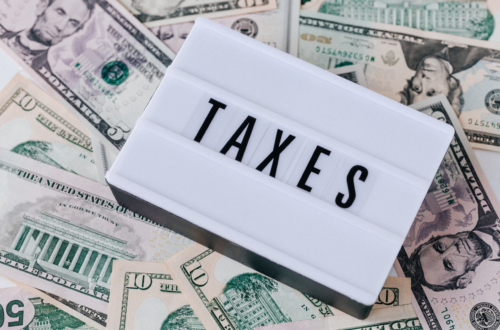Property tax can be a complex subject, often leading to confusion among homeowners and investors alike. Understanding property tax rules is essential for anyone looking to manage their financial obligations effectively and to avoid potential pitfalls. Knowledge of these regulations enables individuals to make informed decisions that can significantly affect their budgeting and long-term financial planning.
Property taxes vary widely based on location, assessment methods, and individual circumstances. They play a crucial role in funding local services such as education, infrastructure, and public safety. Familiarity with the specific rules governing property taxes in one’s area can lead to better financial management and may uncover opportunities for savings through exemptions or deductions.
Navigating the landscape of property taxes does not have to be overwhelming. With the right information and resources, individuals can demystify these rules and ensure compliance while optimising their tax obligations. Understanding the essentials can ultimately lead to greater financial stability and peace of mind.
Core Principles of Property Taxation
Property taxation involves several key principles that determine how taxes are assessed and collected. Important aspects include the types of property subject to tax, the impact of property value on tax liability, differences between residential and commercial property taxation, and the governing authorities in the UK.
Types of Property Tax
In the UK, property taxes can take numerous forms, including council tax, business rates, and stamp duty land tax.
- Council Tax: Primarily levied on residential properties, this tax is used to fund local services. The amount varies based on the property’s valuation band, which considers the estimated value of the dwelling as of April 1, 1991.
- Business Rates: Charged on commercial properties, these are calculated based on the property’s rateable value, determined by the Valuation Office Agency (VOA). This value reflects the market rent that the property could achieve.
- Stamp Duty Land Tax: Applicable on property transactions, this tax is tiered, meaning different rates apply depending on the property price.
How Property Value Affects Tax Liability
Property value plays a crucial role in determining tax liability. For council tax, properties are divided into valuation bands based on their estimated market value.
- Higher valued properties result in higher council tax bills. A property valued within a specific band will incur taxes calculated for that band.
For business rates, the rateable value assigned by the VOA impacts the amount payable. Businesses may also receive reliefs or exemptions based on property value or usage.
Residential Versus Commercial Property Tax
Residential and commercial properties incur different taxation rules due to their distinct purposes.
- Residential Properties: Council tax is the primary tax, with rates influenced by the property’s valuation band. Local authorities oversee set rates, which can vary significantly by region.
- Commercial Properties: These properties are subject to business rates, which consider the property’s profitability and usage. The separate assessment of rateable value allows local councils to tailor taxation to the business type.
Taxation Authorities Across the UK
Taxation authorities vary across the UK, reflecting distinct local governance structures.
- England and Wales: Local councils administer council tax, while the VOA evaluates properties for business rates.
- Scotland: The process is similar, with different councils managing council tax, while the Scottish Government oversees the assessment of non-domestic rates.
- Northern Ireland: The Department of Finance is responsible for property taxes, including rates for both residential and commercial properties.
Knowledge of these differences is essential for property owners and potential buyers, as they directly affect financial planning and obligations related to property ownership.
Navigating Stamp Duty and Land Taxes
Navigating the complexities of stamp duty and land taxes is essential for property buyers in the UK. Each region has its own specific rules and rates, which can significantly impact the cost of property transactions.
Stamp Duty Land Tax (SDLT) in England and Northern Ireland
In England and Northern Ireland, Stamp Duty Land Tax (SDLT) is applied to property purchases above a certain threshold. The current threshold is £425,000 for residential properties. Rates vary, starting at 0% for the portion of the price below this threshold and increasing incrementally up to 12% for properties valued over £1.5 million.
Current SDLT Rates:
| Property Value | Rate |
| Up to £425,000 | 0% |
| £425,001 to £625,000 | 2% |
| £625,001 to £925,000 | 5% |
| £925,001 to £1.5M | 10% |
| Over £1.5M | 12% |
First-time buyers may also benefit from relief, increasing the threshold to £625,000. This could result in substantial savings, making property acquisition more accessible.
Land and Buildings Transaction Tax in Scotland
In Scotland, the equivalent is the Land and Buildings Transaction Tax (LBTT). This tax applies to property transactions exceeding £145,000. The rates follow a similar structure to SDLT but have different thresholds.
Current LBTT Rates:
| Property Value | Rate |
| Up to £145,000 | 0% |
| £145,001 to £250,000 | 2% |
| £250,001 to £325,000 | 5% |
| £325,001 to £750,000 | 10% |
| Over £750,000 | 12% |
First-time buyers in Scotland are exempt from LBTT on properties costing up to £175,000.
Land Transaction Tax in Wales
Wales has implemented the Land Transaction Tax (LTT), which came into effect in April 2018. This tax applies to residential and commercial property transactions exceeding £180,000. The rates are progressive and vary based on the price brackets.
Current LTT Rates:
| Property Value | Rate |
| Up to £180,000 | 0% |
| £180,001 to £250,000 | 3% |
| £250,001 to £400,000 | 5% |
| £400,001 to £750,000 | 7.5% |
| Over £750,000 | 10% |
First-time buyers receive relief, applicable up to a value of £225,000.
Stamp Duty Exemptions and Reliefs
Several exemptions and reliefs may apply across the UK, significantly reducing the tax burden on property purchases. Common exemptions include:
- First-time Buyer Relief: Available in England, Northern Ireland, and Wales.
- Multiple Dwellings Relief: Applicable if purchasing multiple properties at once.
- Research and Development Relief: Specific to certain commercial properties.
It is crucial for buyers to check their eligibility for these reliefs, as they can greatly impact the total tax owed during property transactions. Understanding these various tax frameworks can help individuals make informed decisions when purchasing property.
Tax Responsibilities and Reliefs for Property Owners
Property owners must navigate various tax obligations, including income tax on rental earnings and capital gains tax when selling properties. Additionally, property investors operating through a limited company may encounter corporation tax on their profits. Understanding these responsibilities and available reliefs is crucial for effective tax management.
Income Tax on Rental Properties
Rental income is subject to income tax, which landlords must report on their annual tax returns. This includes income from buy-to-let properties and holiday lets. Landlords can deduct certain expenses from their rental income to arrive at their taxable profit.
Key deductions include:
- Mortgage interest (subject to restrictions under Section 24)
- Maintenance and repairs
- Letting agent fees
Landlords can also claim the wear and tear allowance if it applies to furnished properties. This allowance can help offset costs related to replacing worn furniture and fittings.
Capital Gains Tax on Property Sales
When selling a property, owners may face capital gains tax (CGT) on any profit made from the sale. The gain is calculated as the sale price minus the property’s original purchase price, adjusted for allowable costs like improvements and selling expenses. Each individual has an annual tax-free allowance known as the annual exempt amount, which is subtracted from the total gain.
It is important to note that primary residences are usually exempt from CGT under Private Residence Relief. However, landlords must be mindful of potential CGT on investment properties. Certain reliefs, such as letting relief, may apply under specific conditions.
Corporation Tax for Property Investors
Property owners operating as a limited company must pay corporation tax on their profits. These profits include income from rental properties and any gains made from sales. Currently, the corporation tax rate is set at 19%, with plans for changes affecting future years.
Property investors can also deduct allowable expenses to reduce their taxable profits. These may include management costs, repair expenses, and financing costs related to property investments.
It is vital for property investors to keep detailed records and seek professional advice to maximise their tax reliefs while ensuring compliance with tax regulations.
Advanced Property Tax Considerations and Planning
This section addresses critical aspects of property tax that can significantly influence financial outcomes. Key considerations include inheritance tax implications, strategies for managing second homes and investment properties, and the impacts of recent tax changes.
Inheritance Tax Implications
Inheritance tax applies when a property is passed on after death. Currently, the threshold for inheritance tax in the UK is £325,000. Any value over this amount may be taxed at 40%.
Property investors should consider how their estate is structured. It may be beneficial to gift assets or place them in a trust. Proper estate planning can help minimise potential tax liabilities.
Utilising exemptions, such as the family home allowance, may reduce the taxable estate. A thorough understanding of these regulations is essential for efficient inheritance tax planning.
Tax Strategies for Second Homes and Investment Properties
Owning second homes or investment properties presents unique tax challenges. Income from these properties is subject to income tax, and property investors must report earnings on tax returns.
Deductible expenses include mortgage interest, letting agent fees, and maintenance costs. Effective record-keeping simplifies compliance and helps maximise eligible deductions.
Investors should also be aware of the capital gains tax on profit made from selling a property. Strategic timing and planning around disposals can minimise exposure to this tax.
For those operating second homes for business purposes, understanding VAT implications is crucial. They should ensure compliance while claiming any applicable discounts or reliefs.
Impacts of Recent Tax Changes
Tax laws are continually evolving, impacting property investors significantly. Recent changes have included adjustments to mortgage interest relief, which now allows only basic rate relief for individuals.
Additionally, changes to capital gains tax rates could affect long-term property strategies. Investors must stay informed about evolving regulations to maintain compliance and optimise their tax position.
The introduction of anti-avoidance measures has made it essential for property investors to reassess their strategies. They should evaluate their holdings, consider potential liabilities, and adapt their approach to remain compliant under new tax regulations.





